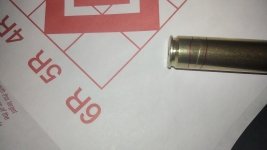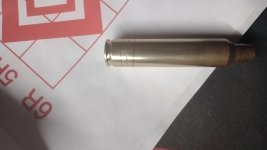I'd double check that you are in fact sizing how you think you are. Measure, and double and triple check. It never hurts to physically re-verify everything.
What are the tools and procedures you're using as well?
Not that I think you're doing anything wrong or anything, it very well could be bad brass. I'd just hate for you to chalk it up to that and have it be something simple that's overlooked and have you ruin good brass
Sent from my SM-G996U using Tapatalk
I double check the dies, and all other tools every time. Head space is measured both before and after sizing each case. Sometimes I choose to measure every case, other times I only measure about a third of them. In every round of case prep I inspect every case for split necks and head separation.
Dies are Hornady Custom grade FL die and seater. Press is the newest version Rock Chucker Supreme, proper shell holder. I use a Little Crow Gun works WFT 2 trimmer, Lyman ELD chamfer tool and RCBS debur tool, and RCBS brushes for primer pockets all run on my RCBS Case Mate
After firing every case is cleaned, annealed, lubed, sized, cleaned again, then chamfered, debur and clean primer pockets. At this point every single case is inspected for issues and a third of them are selected for scrutiny by measuring all relevant dimensions. Occasionally, I will choose to measure every single case for all relevant dimensions.
Primers are CCI #34, hand seated to .006" below flush with the head. This is the anvil bottoming out in the pocket plus about .003". Notes are carefully kept on each load tested, date, temperature etc. No bullets were anywhere near jam and no loads were even within a grain of published max loads. Every single charge is dropped then trickled to within .02 grains of my nominal charge weight.
I have had no signs of excessive pressure, no loss in accuracy, no signs from the rifle that something was amiss.
Let's talk about the rifle. Browning X-Bolt Max Long Range. The only modifications to the rifle are lightening the trigger weight, and the bolt lugs have been lapped because one lug was not making full contact inside the receiver. Barrel was lapped prior to this batch of brass being fire formed, after which my headspace measurement was taken again from the fire formed brass where I found no change in the base to shoulder length on fired brass. Fired brass are decapped prior to measuring the base to shoulder to prevent the primer from affecting the measurement. The measurement is also taken after the brass has been cleaned. The rifle bore and chamber are cleaned to the bare metal after each range visit to aide in the bore always being in the same condition when testing new loads. I usually fore one or two shots to foul the bore before testing.


